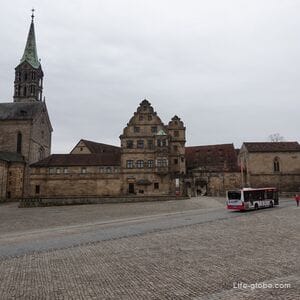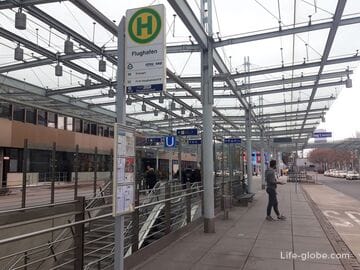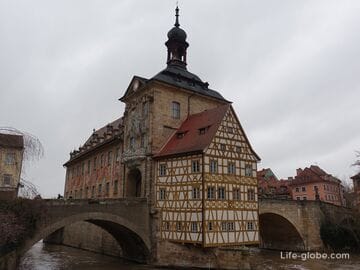Cathedral Square (Domplatz, Domplatz Bamberg) is the main, one of the largest and most impressive squares of the German city of Bamberg, which is its landmark.
The ensemble of the square has been formed for many centuries, since 1012, with the simultaneous formation of the ensemble of buildings of the square.

During its history, the square was called Hofplatz or Burgplatz before secularization. Only a small area in front of the Kapitelhaus was called Domplatz. Then the new Bavarian rulers named the entire territory after the then (Protestant) Queen Caroline Karolinenplatz. It was only at the end of World War II that the name Domplatz, which translates from German as Cathedral Square, gradually became established and became the official name in 1949.
Today, the square is almost entirely a pedestrian inclined space paved with paving stones. The slope of the square arose as a result of lowering the level of the square in 1777 and 1778 to create direct access to the city center of Bamberg. Before that, the gate at the so-called "gatekeeper" was the only exit to the square, but due to two new approaches from the east, the square had to be modified, and the wall formed the eastern end of the Cathedral Square.
Due to the surrounding ensemble of buildings around the perimeter of the square, Domplatz was the spiritual and secular center of power in the city; it has architectural styles of different periods and is included in the UNESCO World Heritage List "The City of Bamberg".
The dominant features of the square are: Bamberg Cathedral, the Old Courtyard and the New Residence.
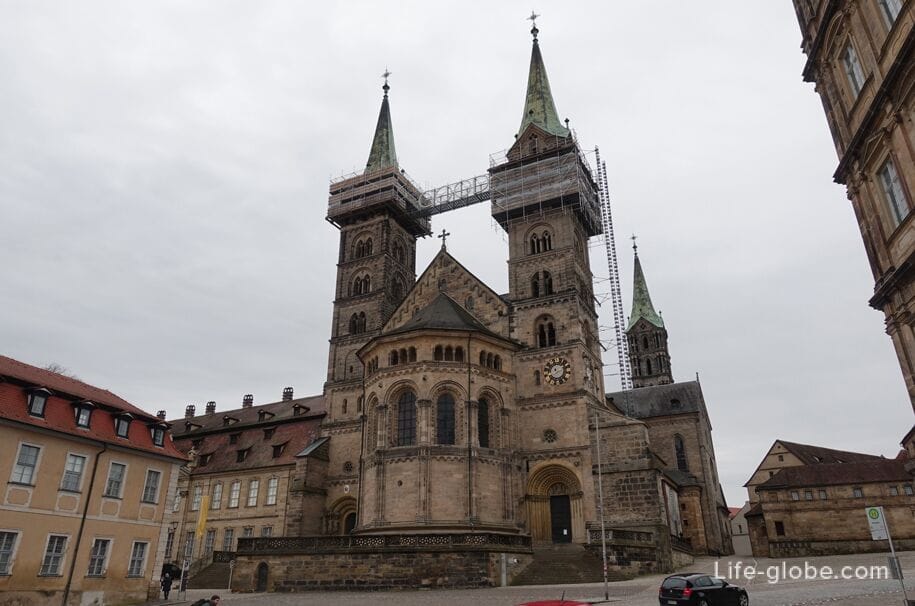

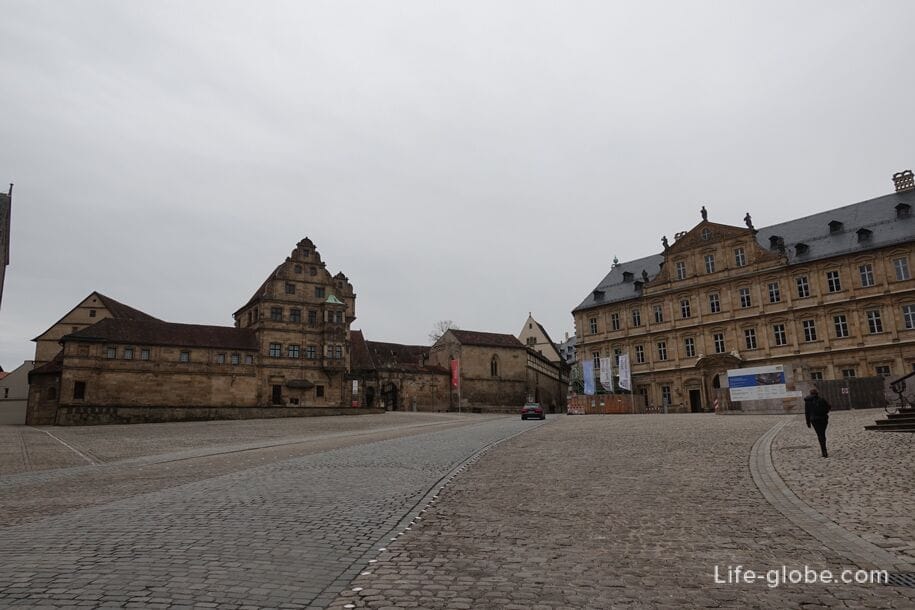
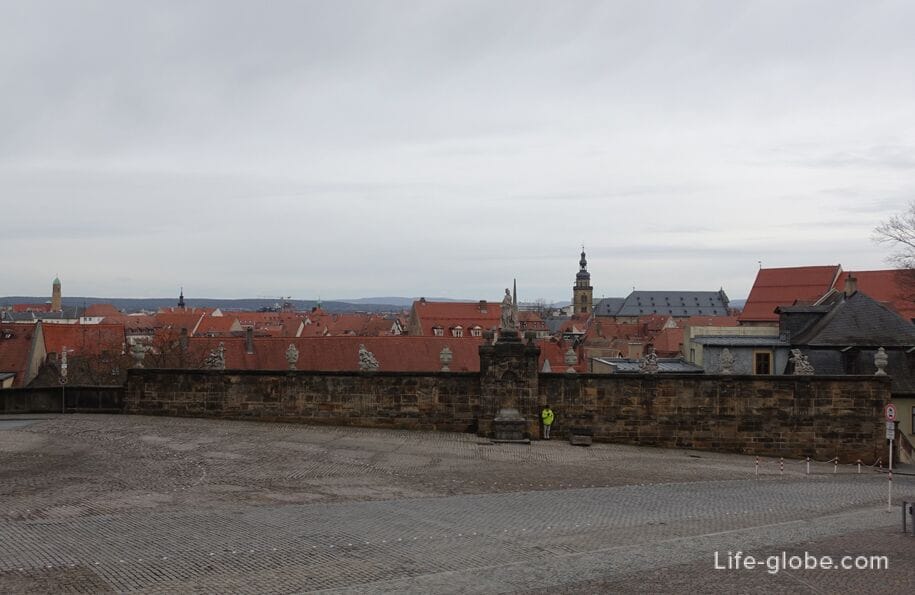
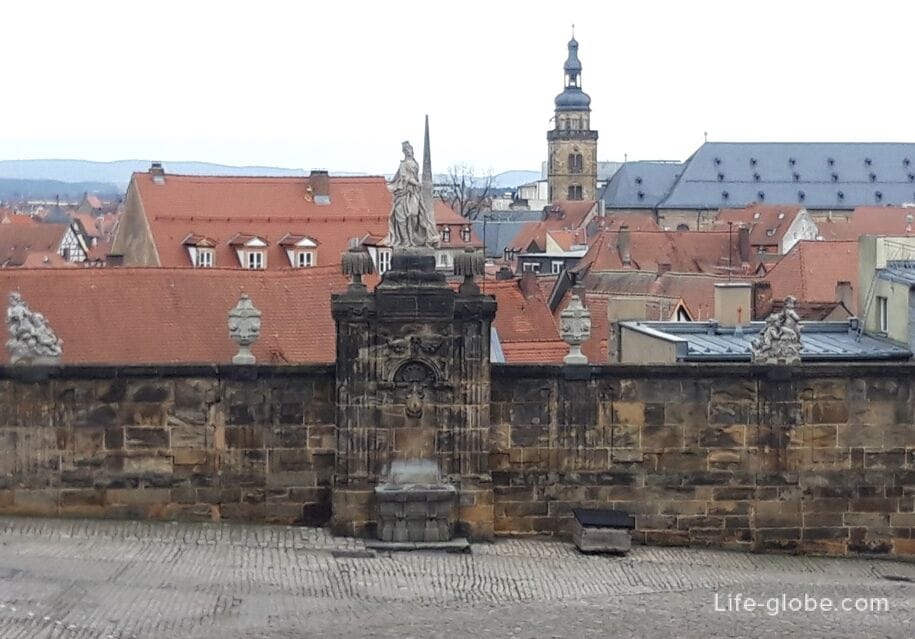

Ensemble of buildings of Bamberg Cathedral Square
Bamberg Cathedral
Bamberg Cathedral (Bamberger Dom) - the Imperial Cathedral of Bamberg, which dates back to the 13th century, is the dominant of the historical center of the city, as well as an example of Romanesque architecture with Gothic elements.
This is the main temple of Bamberg - the Cathedral, the official name of which is the Bamberg Cathedral of St. Peter and St. George (Bamberger Dom St. Peter und St. Georg).
Inside, the Cathedral stands out: the two choirs, crypts, chapels, altars, and organs; frescoes, inscriptions and sculptures, the most famous of which is the Bamberg horseman; and tombs, including the tomb of the Holy Imperial couple - Heinrich II and his wife, the Holy Empress Cunegonde, king Conrad III, Pope Clement II and the bishops of Gunter Otto II. More about Bamberg Cathedral...
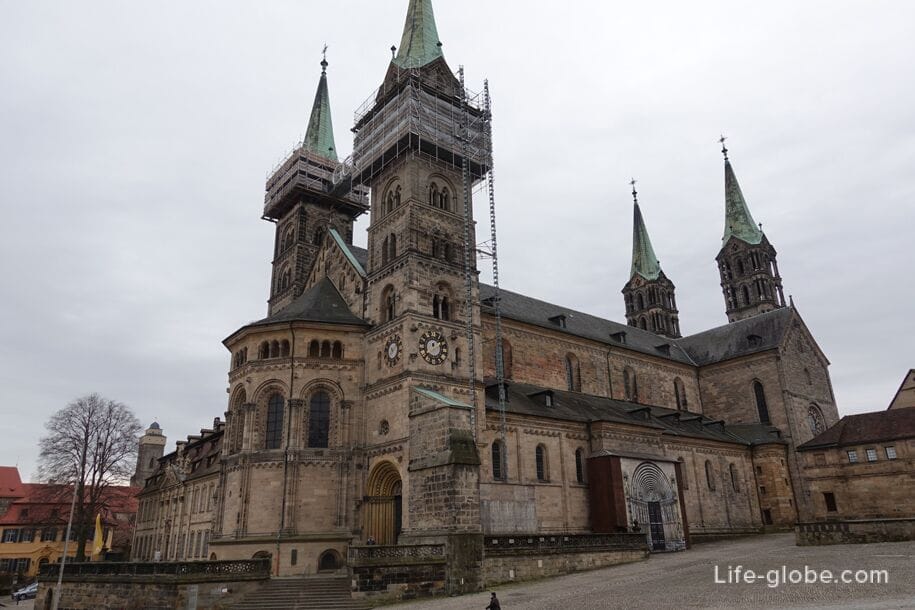
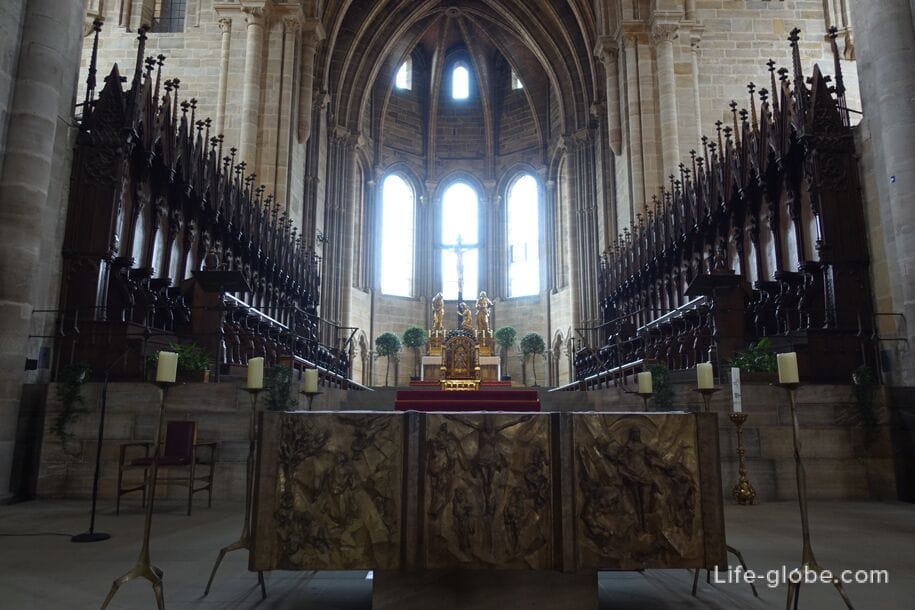

Cathedral Museum
In the neighboring chapter house, to the south (right) of the Bamberg Cathedral itself, there is the Cathedral Museum (Diözesanmuseum Bamberg).
The chapter house of the cathedral was built by the master builder in the Baroque style Balthazar Neumann between 1731 and 1733. The first plans of the museum were made back in 1907, but only in 1966 it opened under the auspices of the Metropolitan. The exhibition halls were opened in 1991 and 1992 and expanded in 2005.
The collection of the Museum of the Diocese of Bamberg focuses on treasures and architectural sculptures from Bamberg Cathedral, dating from the time of Henry II and his wife and up to the 21st century.
Museum website: dioezesanmuseum-bamberg.
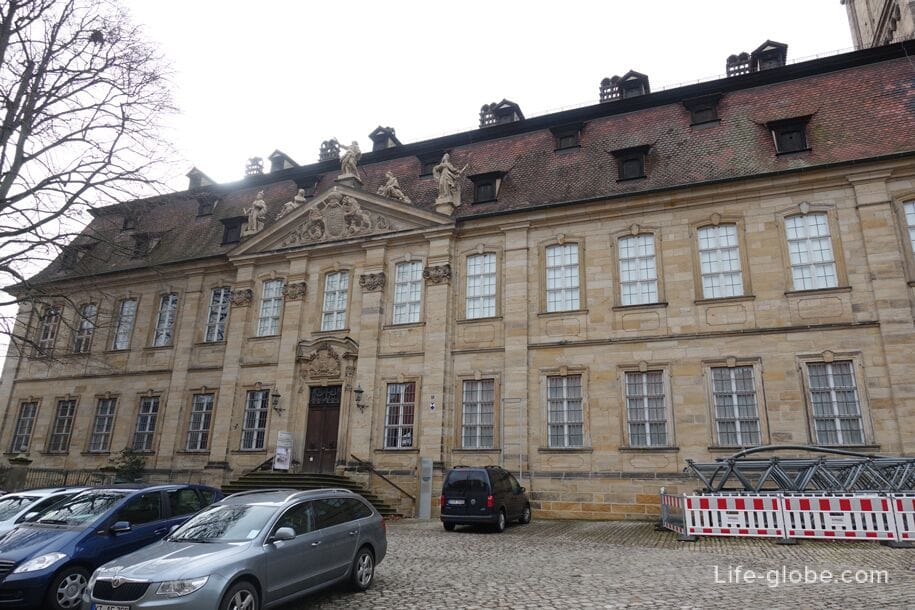
Old Courtyard
The Old Courtyard or Old Residence (Alte Hofhaltung Bamberg) is a complex of historical buildings that previously served as the residence of bishops.
Initially, the palace of Emperor Henry II was located on the site of the Old Courtyard. Since the diocese was founded in 1007, it is likely that the palace also served as the bishop's residence.
After the palace was left at the complete disposal of the bishops, in the 15th and 16th centuries they rebuilt the palace to suit their needs as a complex of buildings in the style of the German Renaissance.
Today, the Old Courtyard stands out with a gate with sculptures, a building with a powerful bay window with rich details in the Renaissance style, which adjoins the gate and a courtyard surrounded by ancient half-timbered buildings.
In the Old courtyard are: the Historical Museum (free Museum) and the former Catherine chapel (Katharinenkirche, Katharinenkapelle), which offers a venue for civil weddings, concerts and lectures, and where from may to October, called "Light and shadow" will mark the 1000-year history of the city (works as a Shadow theatre, Theatre of Shadows). More about the Old Courtyard, the museum and the theater...
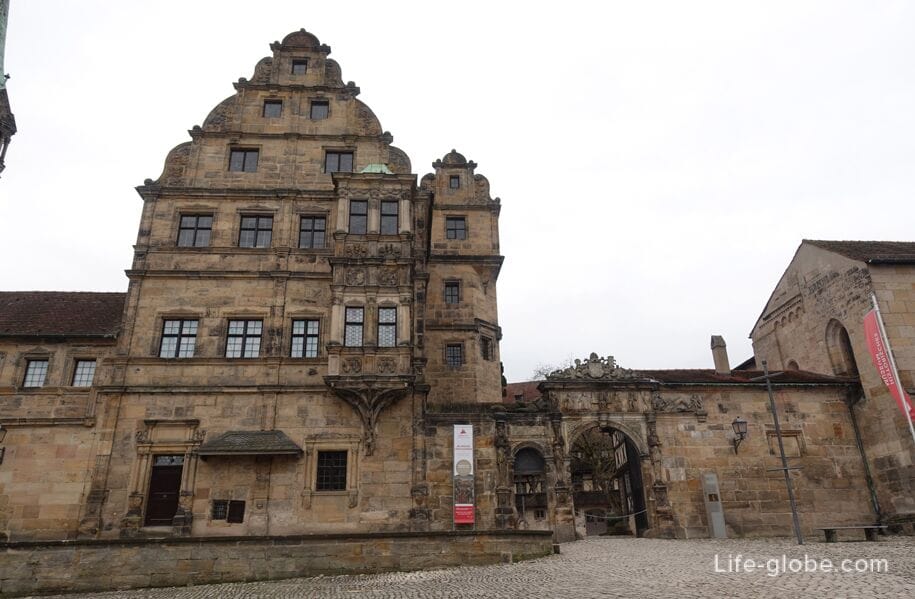
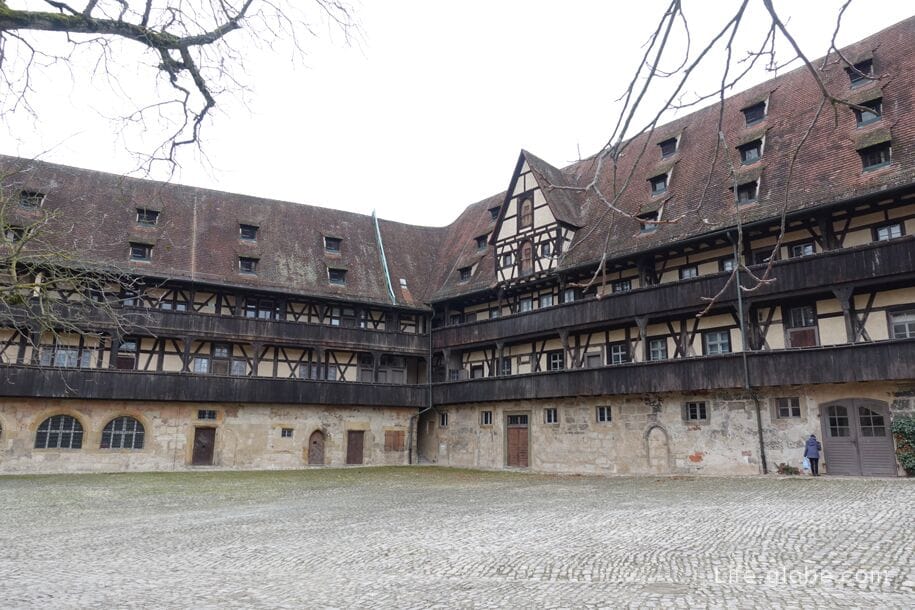
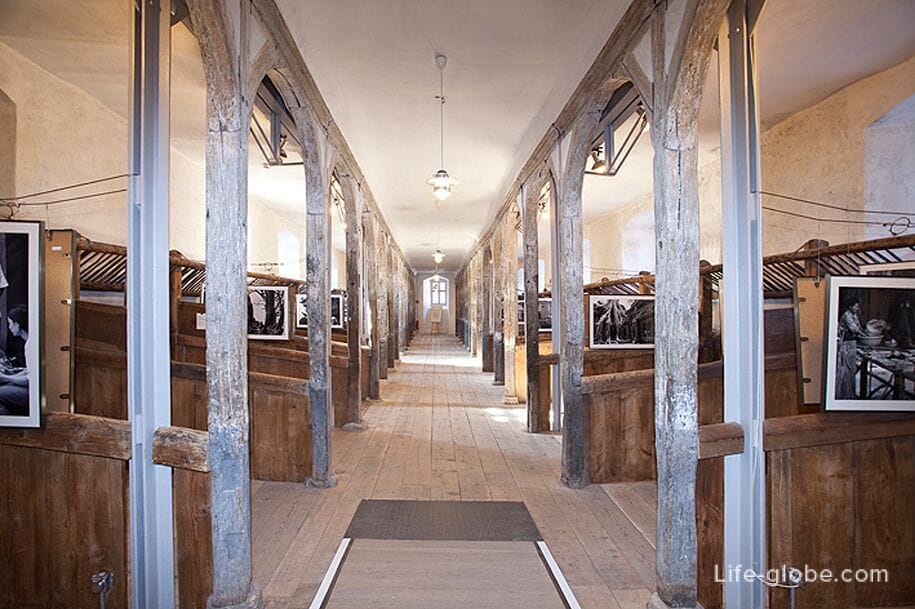
Nova Residence
Since the beginning of the 17th century, when the then existing residence (now the Old Courtyard) was already cramped for bishops, the so-called New Residence (Neue Residenz) began to be erected on the contrary.
The construction of the New Residence took place in two stages for more than 100 years.
Today, the residence building has several interconnected wings (sandstone buildings), which form a long zigzag structure with architectural portals and various discreet decorations.
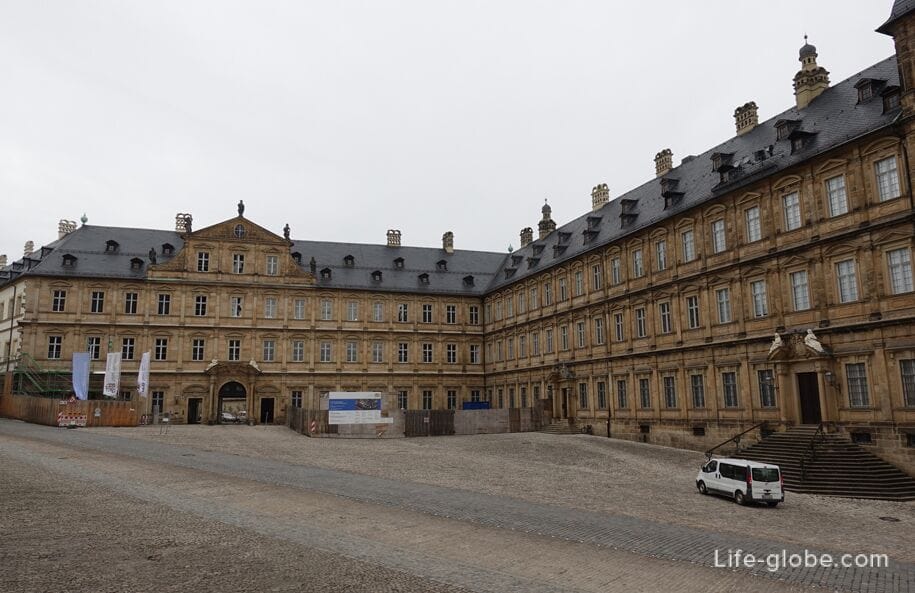
In the New residence are:
- The State Gallery of Bamberg (Staatsgalerie von Bamberg), which presents almost 50 halls and rooms of the late 17th and 18th centuries in various styles, where art treasures of more than four centuries are presented, from late Gothic to historicism, including more than 500 pieces of furniture, painting, sculpture and textile art.
Also noteworthy is the gallery of collections of Bavarian state paintings with departments of Old German and Baroque styles;
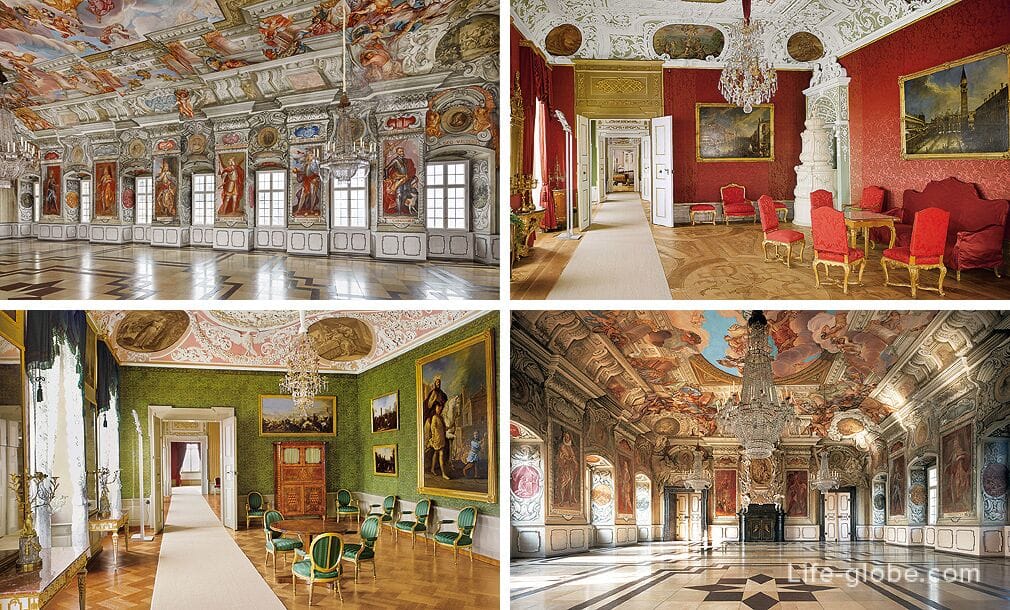
- The Bamberg State Library (Staatsbibliothek Bamberg), located in the east wing of the New Residence and largely preserved the halls of the former residence with stucco and frescoes;
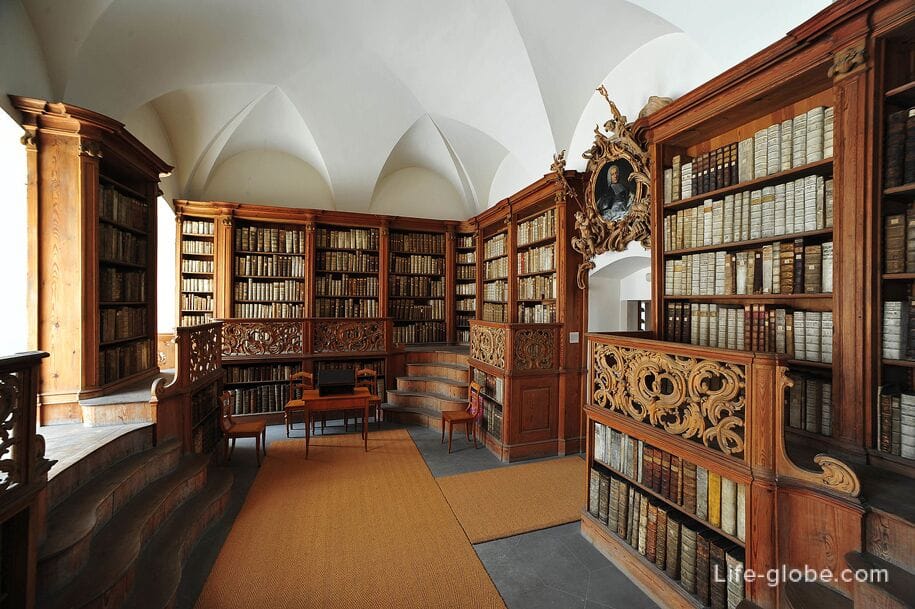
- rose garden (rose garden, Rosengarten Bamberg / Rosengarten Bamberg), located between the wings of the New residence (courtyard).
The Baroque garden was created in the 18th century on the site of a Renaissance garden.
Roses grow in the garden (about 4,500 roses of 50 different varieties), lime trees, paths are broken, there are sculptures and a memorial to Otto and his wife Amalia in a blind arch in the wall.
The Rococo garden pavilion, designed by the builder Johann Jakob Michael Kuchel, now houses a cafe with outdoor tables.
The rose garden offers a wonderful panoramic view of Bamberg, as well as Michelsberg with the former Benedictine monastery. Learn more about the New Residence, gallery, library and rose Garden...
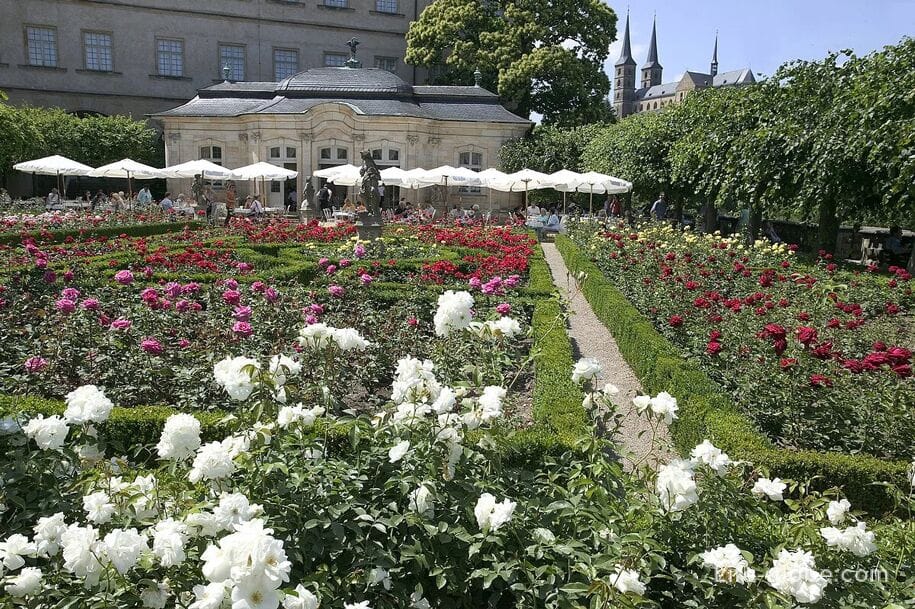
Scheme of Bamberg Cathedral Square
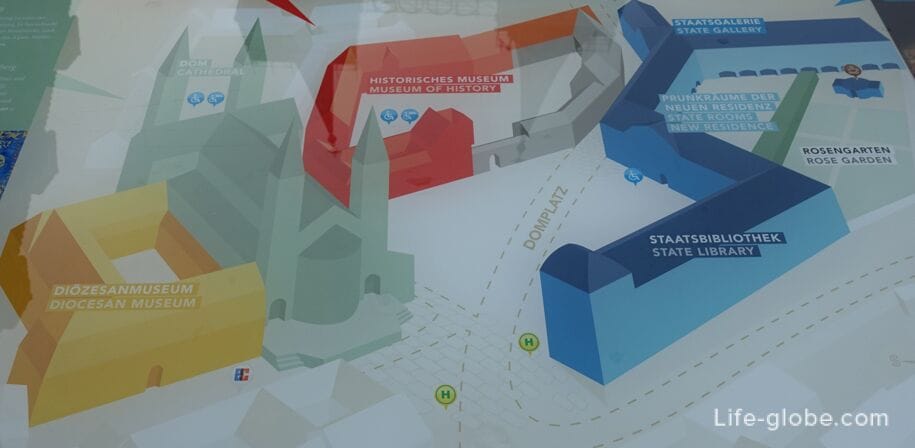
All accommodation facilities in Bamberg, including in the historical center of the city and more remotely from it, can be viewed and booked here




